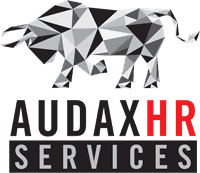The corporate landscape today is very competitive. Many employers are attempting to find and acquire top talent from the global market, given the rapidly aging population and skills shortages within the existing workforce. Skilled migrants typically are sought after, as companies require their expertise to remain competitive.
HR professionals and organizational leaders frequently take a customer-centric approach when establishing talent retention strategies, which means viewing their employees as customers. This entails studying employee profiles and developing a supportive ecosystem to assist in meeting their needs. However, skilled migrants are not all the same. In addition to assigned expatriates, organizations are increasingly recruiting self-initiated highly skilled migrants, who moved to a host country on their own and found a job commensurate with their level of expertise. Attracting such talent is difficult, but keeping them seems to be even more so.
Our research team interviewed highly talented migrants who pursued career opportunities overseas on their own and were hired for key positions (e.g., managers, IT architects, lawyers) by diverse firms in their destination countries. Specifically, we focused on Luxembourg since this country has been at the center of hiring international talent. The retention challenge is most acute there, and the business’ expertise can be valuable to any organization globally that’s attempting to retain highly talented migrants.
To identify retention techniques that will assist firms all over the world in retaining these individuals, we examined the following obstacles and career plans that these employees face when working in a host country:
Career Challenges and Strategies
The first challenge migrant employees face is attempting to fit in, as many struggle with assimilation. They are often required to learn new business rules and communication methods that differ from those of their prior employer and country of employment. As a result, some find it challenging to form deep bonds and integrate at work.
Managing a career mismatch is the second hurdle. Despite objective career success (e.g., a respectable title and above-average pay), migrant employees frequently feel disenchanted once they recognize that their professional commitments and expectations have not been met. For example, they may discover that they cannot advance without considerable local experience, or that their professional occupation is less prestigious in a new country. Furthermore, their actual job may differ from what they expected.
To overcome these obstacles, highly talented migrants typically adopt one of three career strategies:
Profile 1: Career Rebels. They attempt to plan and negotiate their careers with their employers by actively participating in interactions with upper management to advance their careers. As a tactic, for example, they may threaten to leave their workplace by demonstrating a new job offer.
Profile 2: Workhorses. They want to establish themselves via hard work and effort, so they volunteer, are always available, work long hours, and continue their education and training. For example, they may work 15-hour days and undergo training on weekends.
Profile 3: Career Conformists. They accept reality in its entirety. While acknowledging career hurdles in a new workplace and host country, they also concentrate on the positive aspects of their new life and career. They may, for example, emphasize that their quality of life has improved in the host country.
Retaining Highly Talented Migrant Workers
It’s critical to recognize that self-initiated highly skilled migrants are not the same as assigned expatriates or local employees. A lack of integration and discontent due to unmet professional expectations are two important variables that can have a substantial impact on skilled migrants’ productivity, increasing the danger of “brain waste” within the organization, resulting in higher turnover. Therefore, it’s critical to help migrants build better connections and a sense of belonging within the organization, as well as present a fair preview of future career prospects.
Organizations are advised to take the following steps to attain their retention goals:
At Zortify, an international natural language processing company that assists businesses with decision-making through artificial intelligence, HR uses a combination of AI-based personality assessment tools to minimize biases, highlight data and traits that are often overlooked, and make this data more accessible. Zortify uses this strategy in their own operations as well as to help other firms maximize talent performance.
One notable example is Zortify’s collaboration with Mitsubishi Electric’s German division. Zortify facilitated team member reshuffling inside the division, allowing employees (including those from abroad) to be given assignments that match with their capabilities, and stimulate collaboration with the most-compatible team members. This implementation led to a 15 percent boost in efficiency within the division and helped enable multinational talent reach its full potential.
“It’s crucial for international professionals to become visible and be given the opportunity to be recognized as high-potentials for senior positions,” said Patrícia Souza, senior human experience manager at Zortify in Luxembourg. “AI plays a fundamental role in eliminating biases during the talent selection process and the employee’s life cycle. It also helps by focusing on people’s actual experience and skills rather than their nationalities, beliefs, gender or race.”
Understanding how highly talented migrants approach different career issues provides a more detailed picture of this group of talents and a fertile ground for HR to design targeted retention strategies. Career Rebels, for example, appear to be the most difficult category of workers to retain, as they frequently negotiate with management directly and are more likely to leave if their professional demands are not met. Workhorses and Career Conformists, on the other hand, may be more passive and adopt different techniques for career advancement without confrontation.
For Career Rebels, an open dialogue with senior management and HR is crucial, and they will love working in an open culture with easy communication to negotiate their needs. On-the-job training opportunities are extremely valuable for Workhorses, who should be recognized for their efforts and ensured a proper work/life balance. And since Career Conformists take a more inactive approach to career strategizing, businesses should demonstrate to them that career advancement is achievable. HR should highlight examples of highly skilled migrants achieving job success and encourage Career Conformists to collaborate with these role models.
Overall, organizations need to establish a supportive ecosystem that satisfies the needs of highly skilled migrants while also retaining their top people by personalizing and implementing meaningful retention strategies.
Ksenia Usanova is a Ph.D. candidate in talent management and human resources management at the University of Luxembourg. Jelena Zikic is a professor of organizational behavior, HR & career management at York University in Toronto. Vlad Vaiman is a professor and associate dean of the School of Management at California Lutheran University in Thousand Oaks, Calif.
This content was originally published here.



